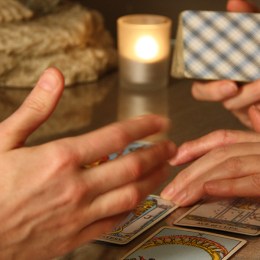
Here at GfK, one of the world’s leading consumer research and retail data houses, we ran a Christmas gifting study earlier this year called Project Rudolph, across 2000 shoppers, 15 categories and all major online and physical retail channels to understand how Christmas shopping behaviour actually works.
Following are a few statistics from that study as I think they apply to retailers and to brands, with some implications for activation for Christmas 2014.
WHO BUYS HOW MUCH OF WHAT?
At Christmas 2013, 77 percent of the total gifts purchased in our study were physical gifts, 17 percent were gift cards and six percent were experiences and events. The incidence of both gift card and experiences/events purchase is increasing, with more than half of our shoppers buying gift cards and more than one in four buying experiences/events.
This is because as consumers ‘already have everything’, particularly Older Families and Empty Nester lifestages, it is becoming increasingly difficult to find the ‘right’ gift, one of the most important aspects of Christmas shopping. So shoppers buy giftcards where recipients can choose the right gift themselves, or experiences that are unique.
The average number of Christmas gifts purchased by each shopper we spoke to was 19 for a total of 10 recipients, and a total average spend of $754 across those 19 gifts (or around $39 per gift). At least one of the gifts was purchased on impulse. Young Families were likely to buy more items with a higher total basket spend, due to an average of four gifts per child.
CHRISTMAS SHOPPING IS BECOMING A MANAGED PROCESS
The macro trend of ‘time poor’ means Christmas shopping is becoming an increasingly managed process. No longer just for workplace Christmas functions, ‘Kris Kringle’ has already been adopted by a third of Australian families, with up to another 25 percent planning to try Kris Kringle for Christmas 2014.
Talking to Kris Kringle gifting occasions and adult recipients is an opportunity for retailers for a number of categories. For ‘anonymous’ Kris Kringle, spend is lower, typically $20-$50, on categories like liquor, chocolates and giftcards.
For ‘allocated’ Kris Kringle, the spend is from $50-$100 and more likely to be on categories the recipient is interested in, ranging from apparel and accessories to health and beauty items, home entertainment and personal electronics.
However, this management of the gift shopping process, combined with a lack of traditional Christmas cues such as decorations and carols when shopping online, means the perceived spirit of Christmas is diminishing and the perceived commercialism is increasing.
Retailers and brands need to ensure their websites cue Christmas in their design, not just product price offers, as early as this month because online Christmas purchases tend happen during November so shoppers can be sure their gifts arrive in time. Shoppers typically allow two weeks for delivery of Christmas gifts ordered online.
MOST LOVE CHRISTMAS DAY BUT DISLIKE CHRISTMAS GIFT SHOPPING
Christmas is polarising. On one hand, more than half agreed that Christmas is the time to spend with loved ones and family, and nearly half agreed that Christmas is more about togetherness than the gifts themselves. On the other hand, a quarter said they try to get the Christmas gift shopping over and done with as quickly as possible, and only 16 percent enjoy shopping for Christmas presents.
Given that ‘togetherness’ is valued more highly at Christmas than the gifts themselves, brands and retailers need to find a way to build not only the spirit of Christmas instore and online, but to facilitate the feeling of togetherness.
The main stressors for Christmas shoppers are noise, crowds and parking. Brands and retailers who can ease these stressors, as well as provide a one-stop-shop with a large or diverse range, are a more likely Christmas shopping destination choice.
Ironically, the one-stop-shop, where everyone buys the same things, is contributing to the lessening of the ‘specialness’ of Christmas and an increasing sense of homogeneity. This means that there is a certain segment of Christmas shoppers who seek out unique gifts, and here traditional physical strip retail plays a role, as does online.
PLANNING AND SHOPPING IS GETTING EARLIER, DUE TO ONLINE PURCHASE
While online shopping for Christmas gifts means the planning and purchasing process is actually beginning earlier in the year rather than later, there is still room for impulse purchases with at least one of the 19 gifts per Christmas shopper bought on impulse.
Just over half of Christmas shoppers start planning and researching their Christmas gifts before November. Earlier planning means that retailers have more than one bite at the cherry. Young Families use the July toy sales to plan for Christmas, and nearly 30% of shoppers are planning and researching Christmas gifts during September and October.
When planning and researching, more than half of all shoppers used a combination of online and physical stores to research, and a further 23 percet used online only. When actually buying Christmas gifts, 55 percent used a combination of online and physical stores, but only two percent did all their Christmas shopping online. So the physical store is still extremely important.
Given the early and omni-channel nature of the planning and research process, retailers need to ensure that their Christmas 2014 communications, including ‘togetherness’ and the ‘spirit of the season’, are integrated across prestore, mobile and instore touchpoints.
STATS TO SAVOUR
- 78 percent of shoppers start thinking about Christmas gifts earlier but actually buy them in early December or later.
- 15 percent of experiences/events Christmas gifts in 2013 were purchased on impulse.
- 34 percent of experiences/events gifts were purchased for partners, 25 percent for parents/in-laws and 20 percent for friends/colleagues.
- Only 40 percent of experiences/events gifts were purchased from a physical store. The majority were bought online.
* As Head of Shopper Experience and Retail Performance at global consumer research and retail data house GfK, Norrelle Goldring specialises in improving shopping experiences by understanding how and why people buy things. She is shopper, channel and category specialist with 20 years’ experience in FMCG and retail across manufacturer, retailer and agency roles with companies such as Coca-Cola, Goodman Fielder and Vodafone. Norrelle is a national thought leader in the Shopper Marketing discipline and has 14 years’ experience in shopper research. www.gfk.com




